
Related
Guests
- Michael Doylelead counsel for the Guardsmen in the litigation. His law firm is Doyle Raizner of Houston.
- Jody Aistropformer member of the Indiana National Guard. He is one of the sixteen soldiers suing KBR.
Sixteen Indiana National Guard soldiers have sued the Houston-based defense contractor KBR, saying the company knowingly allowed them to be exposed to a toxic chemical in Iraq in 2003. The soldiers were providing security for KBR during repairs of a water treatment plant in southern Iraq shortly after the US invasion. The suit claims the site was contaminated for six months by hexavalent chromium, “one of the most potent carcinogens” known to man. It alleges that KBR knew the plant was contaminated but concealed the danger from civilian workers and soldiers. We speak with one of the soldiers and with the lead attorney in the case. [includes rush transcript]
Transcript
JUAN GONZALEZ: Sixteen Indiana National Guard soldiers have sued the Houston-based defense contractor KBR, saying the company knowingly allowed them to be exposed to a toxic chemical in Iraq in 2003.
The unit is based in Tell City, Indiana. The soldiers were providing security for KBR during repairs of a water treatment plant in southern Iraq shortly after the US invasion. The suit claims the site was contaminated for six months by hexavalent chromium, “one of the most potent carcinogens” known to man. It alleges that KBR knew the plant was contaminated but concealed the danger from civilian workers and soldiers.
Civilian contractors working for KBR testified at a congressional hearing in June that they experienced symptoms of chromium exposure. The lawsuit says, “The Tell City Guardsmen were repeatedly told that there was no danger on site, even after KBR managers knew that blood testing of American civilians exposed onsite confirmed elevated chromium levels.”
The toxic chemical “can cause severe damage to the liver and kidneys, depress the immune system” and is known to cause birth defects and cancer, particularly lung cancer, the lawsuit said. The cancer can take years to develop. Some of the soldiers who served at the site now have respiratory system tumors. The suit seeks reimbursement for medical costs, monitoring for cancer and other health problems and unspecified monetary damages.
AMY GOODMAN: KBR, the largest private contractor in Iraq, used to be a subsidiary of Halliburton, the oilfield services company whose former chief executive was, well, now Vice President Dick Cheney.
We invited KBR to join us on the program today. They refused our request, but they did issue a statement denying the company harmed troops and was responsible for an unsafe condition.
Michael Doyle is the lead counsel for the Guardsmen in the litigation. He joins us from a studio in Houston, where KBR is based. We’re also joined on the telephone by Jody Aistrop, a former member of the Indiana National Guard and one of the plaintiffs in the suit.
We welcome you both to Democracy Now!
Jody, tell us about your time in Iraq, where you were, what you were doing, why you think KBR has made you sick.
JODY AISTROP: Good morning. Well, my time in Iraq, we just spent at different sites every day, just basically getting KBR in, getting them out and guarding them while they were doing their job, just protecting them. Specifically, the water plant, we would go there, you know, every third day. And if the contractors really liked you, liked the job you were doing, you could go for a week for two weeks straight.
And, I mean, I believe that we were contaminated, because I, myself, seen the stuff on the ground. I was in the pump room, where the Iraqis were down working on the pumps. And the whole place was just covered, the pump room was. [cough] Excuse me.
I really don’t know what else to say. We basically just went in, did our job. And I feel that they knew. A report had came out that KBR knew that the ground was contaminated. And we were just told it was a mild irritant, don’t worry about it. The bloody noses are from the dry air, the sand. And we just continued to do our job, like it was nothing.
JUAN GONZALEZ: And, Jody, what were some of the symptoms that you and the others, beside the bloody noses that you mentioned, that you started to experience? And did you — what kind of complaints did you lodge to them, to the company officially?
JODY AISTROP: The main one was the bloody nose. Your eyes would burn. You would get a rash, like on your arms or your legs. And actually, my rash just cleared up like three months ago. And it turned into lesions once I got home.
And as far as complaints, we would tell the contractors — you know, we would notice the stuff on the ground, we’d like, you know, “What is this stuff?” And they said, “Don’t worry about it. It’s a mild irritant. It’s not going to mess with you.” And then, later, you know, we were actually pulled out of the water plant towards the end of our tour, and we guarded it from the outside, while the contractors were working inside. And they actually had protective gear on.
AMY GOODMAN: Michael Doyle, lay out the whole lawsuit, the grounds on which you’re suing.
MICHAEL DOYLE: KBR actually very clearly — and we know this from some testimony that KBR managers have already given in a kind of a suit by the civilians, that they absolutely knew that there was sodium dichromate out there at the facility. It’s absolutely also clear that that’s one of the most dangerous carcinogens. This stuff — and folks may have heard about hexavalent chromium in the Erin Brockovich, where they had relatively small amounts, very serious consequences. There were bags of this stuff. And at least some of the testing showed 1.9 percent of the soil was actually sodium dichromate around this site. And despite being paid well to do a site assessment; to do this project; to make sure that the folks out there, the civilians and the soldiers, were protected; they basically just kept ignoring it.
By the time they finally admitted there was a problem, these Guardsmen, as well as the other folks out there, had had months and months, you know, at different times of exposure to something that’s going to cause them really serious health problems. Hopefully, not all of them are going to have the same effects, but it’s something that not only do you have a very elevated risk for cancer, which is very well-documented in the medical literature, but the reality is that you also get a sensitivity to chromium, which is in leather products — it’s basically all around us. And so, you’re going to have these recurrent hyperallergenic kind of problems indefinitely.
But I think what really has most concerned the soldiers who were out there is they didn’t know about this. They weren’t told. They were actually told the opposite about how serious this was. It wasn’t until after these hearings in June of this year the Indiana National Guard was told for the first time about how deadly serious this was. These men were actually given briefings by the Guard in September of this year, and they’ve learned for the first time how serious this was and how some of the health problems these guys to some degree are still having, what it might really face for them in the future. And that’s a pretty serious problem for these soldiers going forward, knowing that they’re carrying this inside their body now.
JUAN GONZALEZ: Well, Michael Doyle, aren’t military contractors in some ways immunized against lawsuits when they’re doing work for the military in time of war?
MICHAEL DOYLE: KBR has consistently claimed that, and I think I can say, without exception, that’s been their argument in every case, that even though we’re a private contractor that’s paid extremely well for doing this — and, in fact, on the site, it was KBR that eventually made the decision, after more problem in their own contractor employees tested positive for chromium in their blood, to shut it down. They consistently claim that. I don’t believe that that’s a valid legal defense, but I will say that they’ve absolutely tried to claim the same immunity, basically “We’re the government; you can’t sue us.”
AMY GOODMAN: We’re going to break and then come back to this discussion with Michael Doyle, who’s the lead counsel in the case of the Indiana Guardsmen who are suing KBR, KBR based in Houston, where Michael Doyle is. Jody Aistrop, with us on the phone, former member of the Indiana National Guard, one of the sixteen soldiers suing the former Halliburton subsidiary KBR. Stay with us.
[break]
AMY GOODMAN: We continue on this lawsuit that has just been filed against the former Halliburton subsidiary, now its own company, KBR. It’s based in Houston. Michael Doyle joins us from Houston, lead counsel for the Indiana Guardsmen who have filed the lawsuit. Jody Aistrop is one of those Indiana National Guard who are suing KBR.
The lawsuit, Michael Doyle, talks about KBR seeking to conceal the contamination and, once discovered, limiting exposed individuals’ knowledge about the level of poisoning they suffered. First of all, how did the chemical get there? And how do you know all of this?
MICHAEL DOYLE: Well, we know the chemical was there, because the Iraqis apparently were using it. It was being used as an anti-corrosive. This is a huge water plant that’s used to pump water down into oil wells so the oil keeps coming up. And this is basically — was used. It had been banned pretty much everywhere in the world for a number of years, but they were using it to keep the pipes clean. And it contained an extremely high amount, almost pure hexavalent chromium.
There are some indications, and it’s really just speculation, but there are some indications from the Iraqis that they gave to some of the civilian workers on site, that as part of the sabotage by the Baathist Party, Saddam Hussein’s folks, before the Americans got there, they had spread it around even more than it had been before. And that’s why, as a result, it was all over the place, not just in one limited area in this very large industrial site where these people were doing all this work and the Guardsmen were providing security on a daily basis.
The reason why we know a lot of this stuff is, a number — ten of the American civilian workers out there filed an arbitration claim, which is one of the things that Halliburton required all their employees, including of these Cayman Island subsidiaries of KBR, to sign an arbitration agreement to go work over there. Ten of these folks, including the medic on site, who is a fellow named Ed Black, who I think you could call him almost a whistleblower here, filed a claim. It’s pending in arbitration, and there has been testimony taken and documents produced in that arbitration that have kind of shed a lot of light about what the managers at the KBR level and the safety folks and the other managers involved knew about it.
And one of the important issues that came out in that was that as it became more and more clear — in other words, they kept getting reports of sodium dichromate out there, deadly carcinogen — their plant workers were getting sick, those people out there. The Cayman Island subsidiary folks were actually experiencing these blood clots, which unfortunately is the most acute sign of poisoning from hexavalent chromium. And that’s kind of the characteristic. They actually call it “chrome nose.” Even as they’re getting these reports, they put off doing any testing until after the windy season had ended. The very first — at least what they’ve owned up to — testing was done not when they were hired to do it, when they were supposed to do it back in April and May, but not until August, after these folks had been out there for three to four months.
And not only was the testing inadequate, they basically were very selective about how they did it, and it didn’t line up — the air testing didn’t line up with the soil testing. But when they actually did some blood testing on the civilian workers there, and almost all of them had elevated chromium, which just basically measures all the chromium in your blood, but when you’ve got these guys exposed, that’s a big red flag. There was actually a meeting here with the medical director of Halliburton/KBR and a number of the managers, where they discussed the need — or if you’re really going to test and see whether or not hexavalent chromium is in these guys, the incredibly dangerous substance, there’s a test you’re supposed to do, and they decided not to do that test. And unfortunately, not just for the civilians but also for the National Guardsmen, if that test isn’t done fairly shortly after the exposure — and they knew that — there’s no real way to document the level of exposure, so tracking these guys health-wise forward is going to be that much more difficult.
JUAN GONZALEZ: Well, Michael Doyle, we asked KBR to join us today, but they declined our request. And we did receive a statement from their director of corporate communications, Heather Browne. She said the company intends to vigorously defend — and I want — defend against the suit, and I want to read to you part of the statement. It says, quote, “We deny the assertion that KBR harmed troops and was responsible for an unsafe condition. KBR appropriately notified the Army Corps of Engineers upon discovery of the existence of the substance on the site and the Corps of Engineers concluded that KBR’s efforts to remediate the situation were effective. Further the company in no way condones any action that would compromise the safety of those we serve or employ.” I’d like to ask you to respond to that and also to what the military did, if they were informed by KBR, of the existence of this problem.
MICHAEL DOYLE: Well, thanks, Juan. I think that there’s really two things in there. One of them is that their indication that they informed the military in a timely manner — one of the things that has been provided to these soldiers by the National Guard was a timeline that was actually — we were able to attach to the complaint — that was apparently provided based on information the Army got from KBR. And one of the most glaring kind of issues in there is that when you look at it, it claims KBR didn’t know about this sodium dichromate on site until almost the end of July and then immediately notified the military. We know that’s not true.
Likewise, the issue about their remediation, they finally admitted that this was a problem. The actual top manager of KBR in Iraq did a site inspection in the middle of August in full protective gear. It still took him about three weeks before they finally said, “OK, we’ve got these blood tests now. Let’s go ahead and shut down the plant.” And they did eventually seal off the entire plant, seal off the sodium dichromate, more or less encase it all, and ensure that folks finally were given protective equipment that they should have had three months earlier and told about what was out there. But that’s a little bit late for the folks that had been working there for three to four months.
AMY GOODMAN: Jody Aistrop, what about the KBR workers inside? You were guarding outside, and you got sick. What happened to them?
JODY AISTROP: From the beginning, we were guarding inside. We didn’t actually pull outside until they deemed the site unsafe. So from the beginning of going into the plant for KBR to work on it, we were inside right with them. We would follow them around like we were attached to them.
AMY GOODMAN: And do you know what happened to any of them? Any of them suffering like you did the nose bleed, for example?
JODY AISTROP: The only thing that I know is I did some research on the net, and that’s where I found out about the lawsuit from Mr. Ed Black. I actually know Mr. Black. I protected him over there.
AMY GOODMAN: The medic?
JODY AISTROP: Yes, yes. And that’s how I know KBR, they were suffering the same symptoms that we were. And then, you know, I received a letter about the town hall meeting, and then the Guard informed us what was going on.
AMY GOODMAN: And when you all got these nosebleeds, again, what KBR told you, how they explained those nosebleeds away?
JODY AISTROP: We were basically told that it was due to dry air, the sand blowing, you know, it’s not that big a deal.
JUAN GONZALEZ: Michael Doyle, you filed the lawsuit now. In what court will it be heard? And when do you expect to begin taking — having discovery or depositions?
MICHAEL DOYLE: Well, it’s filed in federal court in Evansville, Indiana in the southern division — or Southern District of Indiana. The hope is, as soon as possible. We’ve been told by the folks we’re working with in Indiana that normal timetable is a year, year and a half for trial. We obviously intend to try and get to the bottom of it as soon as we can, as soon as the court will let us.
AMY GOODMAN: And the secret KBR memos that you got a hold of, can you talk about them?
MICHAEL DOYLE: No. I mean, there is some documents. Ed Black was actually able to obtain when he was there in Iraq, in Kuwait, some documents that, when he saw these, that made it real clear who knew and how long they knew it. Those documents aren’t protected. But as part of this arbitration deal, at least at this point, KBR has taken the position that every single document related to this is secret and can’t be released. So I really can’t talk about the documents. I can talk about the testimony, but the documents at this point are subject to a protective order.
AMY GOODMAN: The KBR memo from 2003 that shows the KBR managers talking about, acknowledging the presence of sodium dichromate?
MICHAEL DOYLE: Well, there is one that Ed Black actually obtained back in 2003 that we were able to file with the papers of the Guardsmen suit. But the great mass of documents, the really documentation of the timeline and all that stuff, I really am not at liberty to talk about, at least at this point.
AMY GOODMAN: Well, I want to thank you both very much for being with us, Jody Aistrop, former member of the Indiana National Guard — they were based in Tell City — one of sixteen soldiers who are suing KBR, which was owned by Halliburton, which was headed by Dick Cheney before he was Vice President; and Michael Doyle, lead counsel for the National Guardsmen. He is based in Houston, where KBR is based.

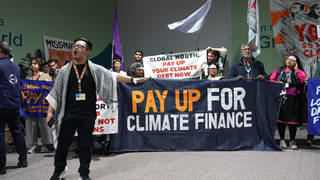
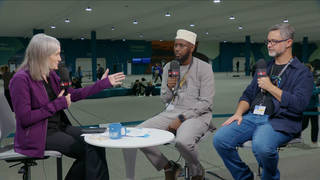
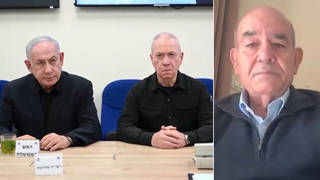
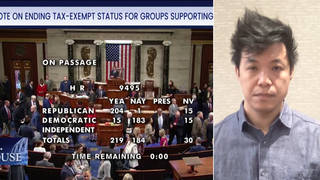
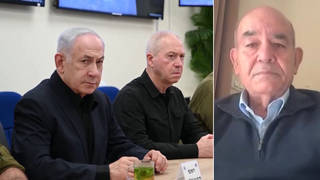




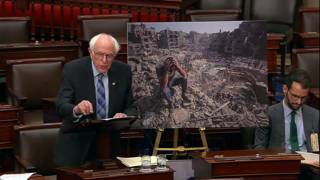

Media Options